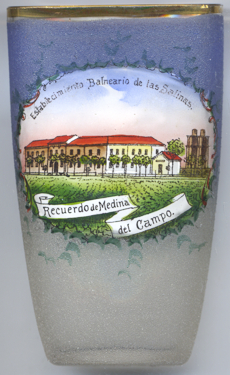

|
| ESPAÑA | Spain |
| Castilla y León | Castile and León |
| Provincia: Valladolid | Valladolid |
Medina del Campo is situated at an elevation of 720 m in the middle of the Spanish Meseta Central, about 45 km southwest of Valladolid. The municipality has a population of about 21,600 (2011).
The town ("Medina" is Arabic for "town") was founded in the 11th century on the La Mota hill (located in the outer parts of today's city). Medina del Campo gained much importance for its fairs during the 15th century and 16th century. The main purpose of the early fairs was banking, wool and textile sales, the book market and an enormous variety of goods and trades. As the population grew, the town was developed towards the plain of Zapardiel brook. Since then, the Padilla Street became the business centre of Medina. In 1489 a great trade agreement, that would last for 96 years, united the kingdoms of Spain and England with the reduction of trade tariffs, the recognition of France as a common enemy, and the marriage of Catherine of Aragon to King Henry VII's son, Prince Arthur (and later to King Henry VIII) – this was known as the Treaty of Medina del Campo (1489). Between the 17th century and the 19th century decline set in; but the town took off again at the end of the 19th century, thanks to the arrival of the railway, the opening of the military district (the quarter of Marques de la Ensenada), and the opening of the hydrothermal establishment of Las Salinas. Also adding to the growth were the strong commercial sector, such as the furniture trade or the opening of shops on Sundays (which is not customary in Spain), and finally proximity of quality wines with the Denominación de Origen 'Rueda'.


The  hydrothermal establishment Las Salinas [left, no. 4622, and right, no. 2724]
opened in 1891 as a small hotel including a bathhouse fitted with marble basins for the patients.
Four springs (named Santa Elisa, Manolito and Tenacidad), supplied the mineral water.
The current building [right, no. 2724] was built in 1912 as a large hotel the design of which was drawn by the same architects
(Javier González de Riancho and Gonzalo Bringas Vega) as the Palacio de La Magdalena in Santander.
In those years, more than 3,000 patients visited the spa each year. The building featured 48 bathrooms in marble of 1st and 2nd class and another
8 bathrooms of super luxury for demanding customers. During the Civil War of 1936 it served as a hospital and later on only had few customers.
In 1988 the complex was bought by a Madrid company which discovered that many parts of the old spa and mineral springs had fallen in disrepair
or were even filled up. After another change in ownership in 1996 the current owner (Palacio de las Salinas, SL) has a firm commitment to turn it back
into 'one of the elite resorts of Spain and Europe'.
hydrothermal establishment Las Salinas [left, no. 4622, and right, no. 2724]
opened in 1891 as a small hotel including a bathhouse fitted with marble basins for the patients.
Four springs (named Santa Elisa, Manolito and Tenacidad), supplied the mineral water.
The current building [right, no. 2724] was built in 1912 as a large hotel the design of which was drawn by the same architects
(Javier González de Riancho and Gonzalo Bringas Vega) as the Palacio de La Magdalena in Santander.
In those years, more than 3,000 patients visited the spa each year. The building featured 48 bathrooms in marble of 1st and 2nd class and another
8 bathrooms of super luxury for demanding customers. During the Civil War of 1936 it served as a hospital and later on only had few customers.
In 1988 the complex was bought by a Madrid company which discovered that many parts of the old spa and mineral springs had fallen in disrepair
or were even filled up. After another change in ownership in 1996 the current owner (Palacio de las Salinas, SL) has a firm commitment to turn it back
into 'one of the elite resorts of Spain and Europe'.
[http://en.wikipedia.org/wiki/Medina_del_Campo, https://de.wikipedia.org/wiki/Medina_del_Campo]
![[scale]](lineal.jpg)